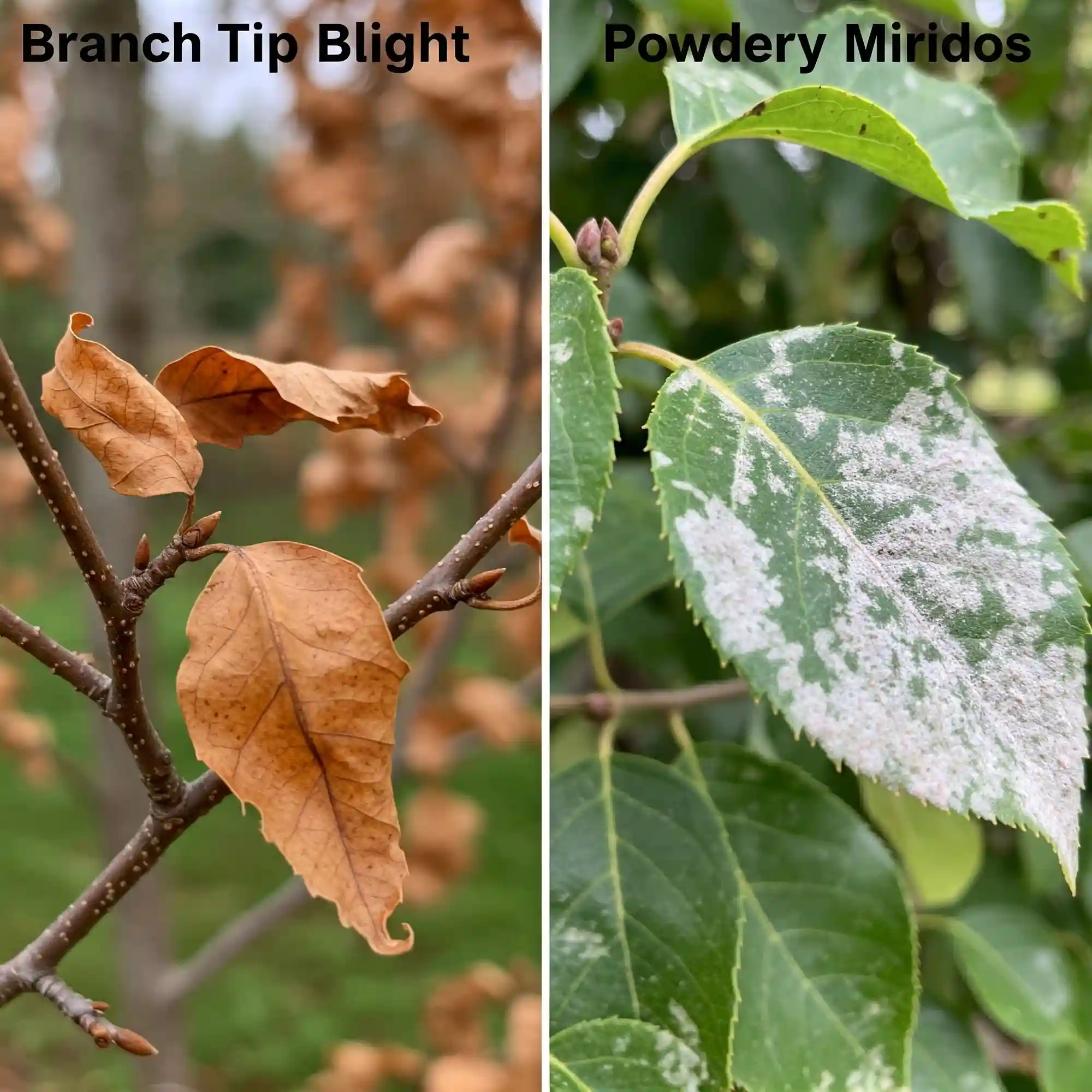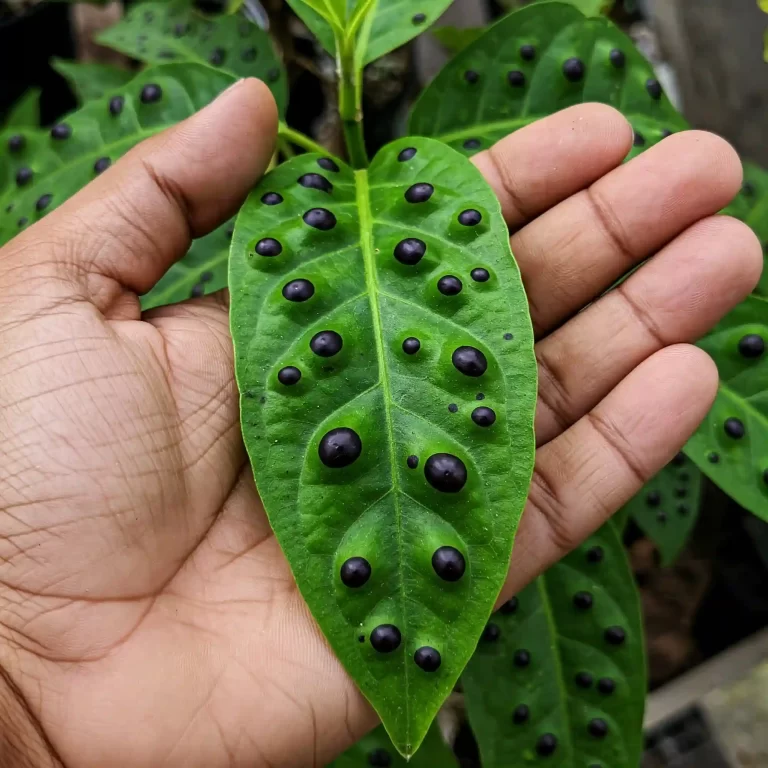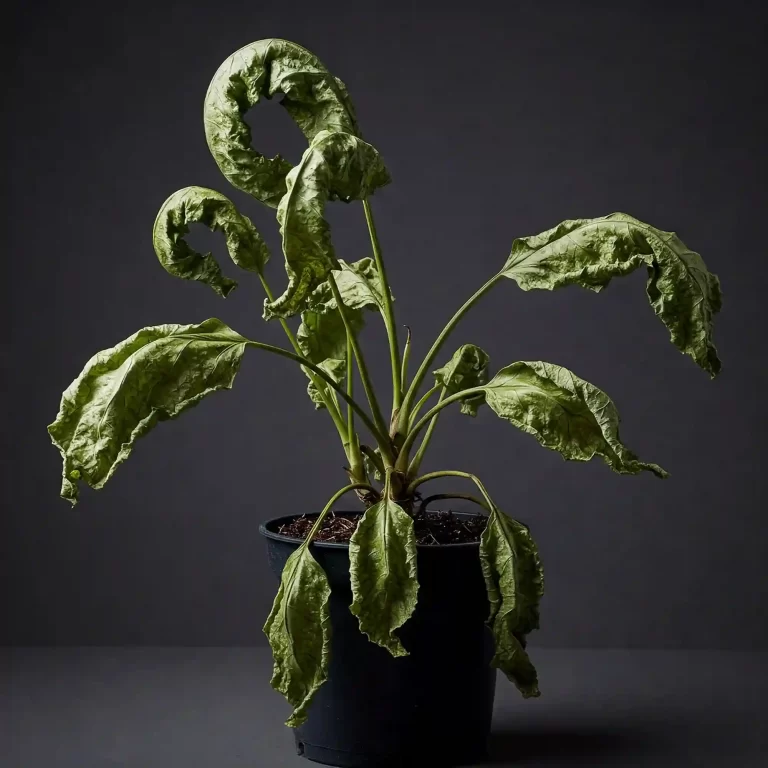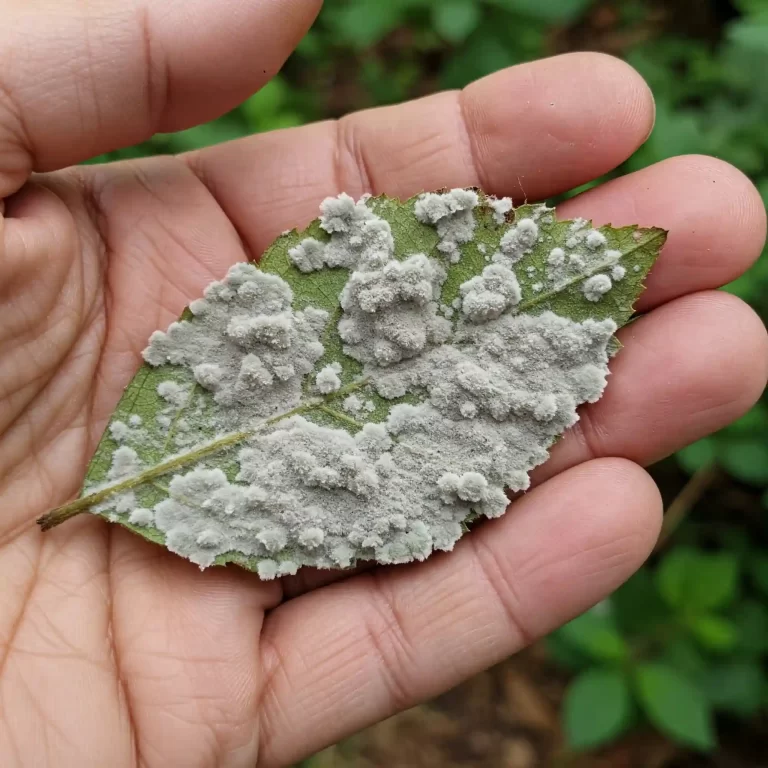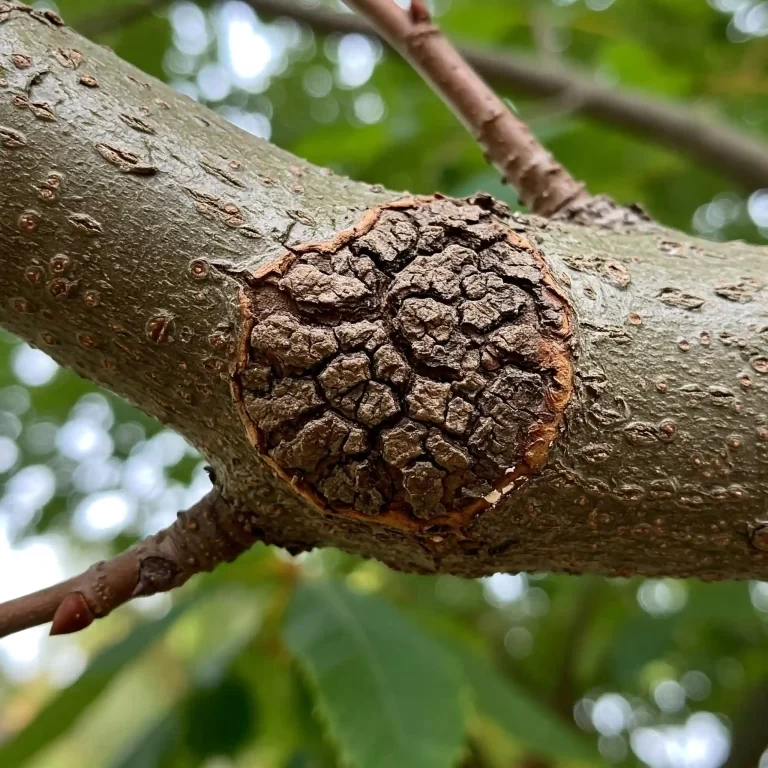Have you noticed the needles on your prized pine trees turning an unsightly brown? Are the tips of branches looking bare and lifeless? I know how disheartening it can be to see your beautiful trees struggling. You’ve invested time, effort, and money into your landscape, and the thought of losing a tree to disease is truly upsetting. But don’t despair! Branch tip blight, while a serious issue, can often be managed with the right approach. In this comprehensive guide, I’ll share my knowledge and experience to help you understand, treat, and prevent branch tip blight, so you can restore your trees to their former glory.
1. Recognizing the Signs: How to Identify Branch Tip Blight
As a gardener myself, I know how important it is to catch plant problems early. With branch tip blight, early detection is absolutely crucial. It can mean the difference between saving your tree and losing it. I’ve seen firsthand how quickly this fungal disease can spread, so I want to equip you with the knowledge to recognize the telltale signs. Here’s what to look for when inspecting your trees:
- Browning Needles: This is often the first and most obvious symptom. The needles, particularly at the tips of the branches, will start to turn brown, reddish-brown, or even purplish. It’s not just a general fading; the browning is often concentrated at the tips and progresses downward. Think of it like the tips of the needles are “burnt.”
- Needle Drop: As the disease progresses, the infected needles will begin to fall off prematurely. You might notice a significant increase in needle drop, especially under the affected trees. This thinning of the canopy is a sign that something is seriously wrong.
- Dieback: This is a more advanced symptom. The tips of the branches will start to die back, becoming brittle and lifeless. This dieback can extend further down the branch, and in severe cases, entire branches can be affected. I’ve seen entire sections of a tree succumb to dieback, which is a devastating sight.
- Cankers: These are small, sunken lesions or sores that develop on the branches. They often ooze resin, a sticky substance that the tree produces in response to injury or stress. Cankers are a clear indication of fungal activity and should be taken seriously.
- Stunted Growth: If your tree is infected with branch tip blight, you might notice that its overall growth has slowed down or even stopped completely. Young trees are particularly vulnerable to this effect. They may not put on their usual growth spurt in the spring or summer.
- Flagging: This is a dramatic and alarming symptom. “Flagging” refers to the sudden browning of entire sections of the tree, almost as if a flag has been draped over the affected area. This is a sign of a severe infection and requires immediate attention.
Table 1: Branch Tip Blight Symptoms vs. Other Tree Problems
| Symptom | Branch Tip Blight | Needle Cast | Pine Wilt | Insect Damage (e.g., Pine Tip Moth) |
| Needle Browning | Primarily at branch tips, progressing downward | Throughout the needle, often in bands or spots | Yellowing/browning of entire needles | Browning/reddening, often with signs of insect activity |
| Needle Drop | Premature needle drop, thinning canopy | Heavy needle drop, often in late summer/fall | Rapid and extensive needle drop | Needle drop may be present, but often less severe |
| Dieback | Branch tip dieback, progressing down the branch | Less common, usually affects entire needles | Rapid dieback of branches, often from the top down | Dieback may be present, but often localized |
| Cankers | Small, sunken lesions on branches, often oozing resin | Not typically present | Not typically present | May be present near entry/exit holes |
| Stunted Growth | Yes | May occur | Yes | Yes |
| Flagging | Yes, in severe cases | No | Yes | No |
I remember one instance where a homeowner confused branch tip blight with normal needle drop in the fall. By the time they realized it was something more serious, the disease had progressed significantly. That’s why you need to be vigilant and aware of the specific symptoms of branch tip blight. Regularly inspect your trees, especially during periods of stress, and don’t hesitate to seek professional help if you suspect a problem. Early intervention is the best way to protect your trees.
2. Understanding the Culprit: What Causes Branch Tip Blight?
Now that we know what to look for, let’s delve into the root of the problem: what exactly causes branch tip blight? The primary culprits are fungal pathogens, microscopic organisms that thrive in certain conditions. The most common culprit is a fungus called Diplodia, but other fungi like Phomopsis and Botryosphaeria can also wreak havoc on your trees.
These fungi are opportunistic, meaning they take advantage of weakened trees. Here are some factors that can make your trees more susceptible to branch tip blight infections:
- Drought Stress: When trees experience prolonged periods of drought, they become stressed. This stress weakens their defenses, making them more vulnerable to fungal attacks.
- Heat Stress: Extreme heat can also weaken trees, making them more susceptible to infection. This is particularly true during heat waves or periods of prolonged high temperatures.
- Frost Damage: Frost damage can injure the bark and branches of trees, creating entry points for fungal pathogens.
- Poor Air Circulation: When trees are planted too close together, or when there is a lack of air movement around them, it creates a humid environment that is ideal for fungal growth. This is why proper spacing is crucial for tree health.
- Wounding: Any injury to the tree, whether it’s from pruning, storms, or insect activity, can provide an entry point for fungal spores. This is why it’s important to use proper pruning techniques and to protect your trees from physical damage.
- Insect Infestations: Some insects, such as certain beetles and weevils, can weaken trees by feeding on their bark and branches. This can create opportunities for fungal infections.
Understanding these factors is key to preventing branch tip blight. By minimizing stress on your trees and providing them with the optimal growing conditions, you can significantly reduce their risk of infection.
I’ve learned from experience that a healthy tree is the best defense against disease. By providing your trees with consistent care, you’re not only improving their appearance but also strengthening their natural defenses.
3. Taking Action: Effective Branch Tip Blight Treatment
If you’ve identified branch tip blight on your trees, prompt action is essential. Delaying treatment can allow the disease to spread further, potentially jeopardizing the health of your entire tree. Here are some effective treatment methods:
- Pruning: This is often the most critical step in managing branch tip blight. Careful pruning involves removing infected branches back to healthy wood. It’s important to prune at least 6 to 12 inches below the visible signs of infection to ensure you’ve removed all the diseased tissue.
- Disinfecting Pruning Tools: To prevent the spread of the disease, it’s crucial to disinfect your pruning tools between each cut. You can do this by wiping them down with a solution of 10% bleach or rubbing alcohol.
- Fungicide Applications: In some cases, applying fungicides can help control the spread of branch tip blight. Copper-based fungicides are often effective against these fungal pathogens. However, it’s important to note that fungicides are not always necessary and should be used judiciously. Consult with a local arborist or plant pathologist for specific recommendations on fungicide use and application rates.
- Sanitation: Removing and destroying all infected plant debris, such as fallen needles, twigs, and branches, is crucial. This helps to reduce the number of fungal spores in the area and minimizes the risk of reinfection. Dispose of the infected material properly, preferably by burning or bagging it and disposing of it in the trash. Avoid composting infected plant material, as this can spread the disease.
Remember, the success of treatment depends on several factors, including the severity of the infection, the health of the tree, and the specific type of fungus involved. Early detection and prompt action are key to maximizing the chances of recovery.
I’ve learned from experience that consistent monitoring and prompt action are essential when dealing with tree diseases. Don’t hesitate to seek professional help if you’re unsure about the best course of action. Arborists and plant pathologists have the expertise and resources to accurately diagnose the problem and recommend the most appropriate treatment options.
4. Long-Term Care: Protecting Your Trees from Future Blight
Prevention is always better than cure when it comes to tree diseases. By implementing proactive measures, you can significantly reduce the risk of branch tip blight and other fungal infections. Here are some long-term care strategies to keep your trees healthy and resilient:
- Proper Watering: Consistent and adequate watering is crucial for tree health. During periods of drought, trees can become stressed, making them more susceptible to diseases like branch tip blight. Deep, infrequent watering is generally preferable to shallow, frequent watering, as it encourages deep root growth. However, the specific watering needs will vary depending on the tree species, soil type, and climate. It’s important to avoid overwatering, as this can also stress trees and create conditions that favor fungal growth.
- Fertilization: Providing your trees with the essential nutrients they need will help them maintain optimal health and vigor. A balanced fertilization program can strengthen their natural defenses and make them more resistant to disease. However, it’s crucial to choose the right fertilizer and apply it according to the manufacturer’s instructions. Over-fertilization can be as harmful as under-fertilization, so it’s important to avoid excessive nutrient levels.
- Mulching: Applying a layer of organic mulch around the base of your trees can help to retain moisture, regulate soil temperature, and suppress weed growth. Mulch also helps to protect tree roots from extreme temperature fluctuations, which can weaken them. However, it’s important to avoid piling mulch directly against the tree trunk, as this can create a moist environment that can promote fungal growth.
- Improving Air Circulation: Adequate air circulation around your trees is essential for preventing fungal diseases. If your trees are planted too close together, prune them to open up the canopy and allow for better airflow. This will help to reduce humidity and create a less favorable environment for fungal growth.
- Choosing Resistant Varieties: When planting new trees, consider selecting varieties that are known to be resistant to branch tip blight. This can significantly reduce the risk of future problems. Consult with your local nursery or a certified arborist for recommendations on disease-resistant tree varieties suitable for your area.
By implementing these long-term care strategies, you can create a healthy environment for your trees and significantly reduce their susceptibility to branch tip blight and other fungal diseases. Remember, prevention is key, and by taking proactive steps to maintain tree health, you can enjoy the beauty and benefits of your trees for years to come.
I’ve learned from experience that consistent care and attention to detail are essential for maintaining healthy trees. By providing your trees with the optimal growing conditions and taking proactive steps to prevent disease, you’re not only protecting your investment but also contributing to a healthier and more beautiful environment.
5. Branch Tip Blight vs. Other Tree Problems
It’s crucial to accurately diagnose branch tip blight to ensure you take the right course of action. Misdiagnosing the problem can lead to ineffective treatments and further damage to your trees. Several other tree problems can mimic the symptoms of branch tip blight, making it essential to carefully observe your trees and consider other possibilities:
- Needle Cast: This is a group of fungal diseases that affect the needles of conifers. Needle cast can cause needle discoloration, browning, and premature needle drop, which can resemble the symptoms of branch tip blight. However, needle cast often affects needles of all ages, while branch tip blight typically starts at the tips and progresses inward.
- Pine Wilt: This is a serious disease caused by nematodes, microscopic worms that infect the tree’s vascular system. Pine wilt can cause rapid needle discoloration, wilting, and death of branches. It often progresses more rapidly than branch tip blight, and the needles may turn a yellowish-brown color.
- Insect Damage: Certain insects, such as pine tip moths, can cause damage to the tips of branches, leading to browning and dieback. However, you might also observe signs of insect activity, such as feeding damage, frass (insect droppings), or the presence of the insects themselves.
If you’re unsure about the cause of your tree’s problems, it’s always best to seek professional help. A certified arborist or plant pathologist can accurately diagnose the issue and recommend the most appropriate treatment. Don’t hesitate to consult with an expert, especially if you’re dealing with a valuable or cherished tree.
I’ve learned from experience that accurate diagnosis is the foundation of successful tree care. By carefully observing your trees and seeking professional help when needed, you can ensure that you’re taking the right steps to protect their health and vitality.
6. The Importance of Professional Help
While this guide provides you with valuable information about branch tip blight, there may be times when seeking professional help is essential. If you’re dealing with a severe infection, or if you’re unsure about the best course of action, don’t hesitate to consult with a certified arborist or plant pathologist.
These professionals have the expertise and experience to accurately diagnose tree diseases and recommend the most appropriate treatment options. They can assess the severity of the infection, evaluate the overall health of your trees, and provide tailored recommendations for management and control.
Arborists can also help you implement proper pruning techniques, apply fungicides safely and effectively, and develop a long-term care plan for your trees. They can also advise you on preventative measures to protect your trees from future infections.
Remember, consulting with a professional is an investment in the health and longevity of your trees. It’s better to seek expert advice early on rather than waiting until the problem has become more severe and difficult to manage.
I’ve learned from experience that it’s always wise to seek professional help when dealing with complex or challenging tree health issues. Arborists and plant pathologists are invaluable resources, and their expertise can make a significant difference in the outcome.
By combining your own knowledge and care with the expertise of professionals, you can ensure that your trees remain healthy and vibrant for years to come.
7. Common Questions About Branch Tip Blight
I understand that you might have some specific questions about branch tip blight. Here are answers to some of the most frequently asked questions I encounter:
- How do I know if my tree has branch tip blight? As discussed earlier, carefully observe your trees for the telltale signs, including browning needles, needle drop, dieback, cankers, and stunted growth. If you notice any of these symptoms, it’s important to investigate further.
- Is branch tip blight contagious? Yes, branch tip blight is contagious. The fungal spores can easily spread to other trees through wind, rain, or even contaminated pruning tools. This is why it’s crucial to practice good sanitation and disinfect your tools after pruning infected branches.
- Can I save a tree with branch tip blight? The prognosis for a tree with branch tip blight depends on several factors, including the severity of the infection, the health of the tree, and the specific type of fungus involved. Early detection and prompt treatment can significantly improve the chances of recovery. However, in some cases, the damage may be too extensive to save the tree.
- What is the best treatment for branch tip blight? Pruning infected branches back to healthy wood is often the most effective treatment. Fungicide applications may also be helpful in some cases, but it’s important to consult with a professional for specific recommendations.
- How to prevent branch tip blight on pines? The best way to prevent branch tip blight is to maintain the health and vigor of your trees. This includes providing adequate water, fertilizing appropriately, and protecting them from environmental stress. Proper pruning and sanitation practices are also essential for preventing the spread of the disease.
By understanding the answers to these common questions, you can better equip yourself to manage branch tip blight and protect your trees. Remember, early detection and prompt action are key to successful treatment.
I’ve learned from experience that knowledge is power when it comes to tree care. By understanding the disease and knowing how to respond, you can make informed decisions that will benefit your trees for years to come.
